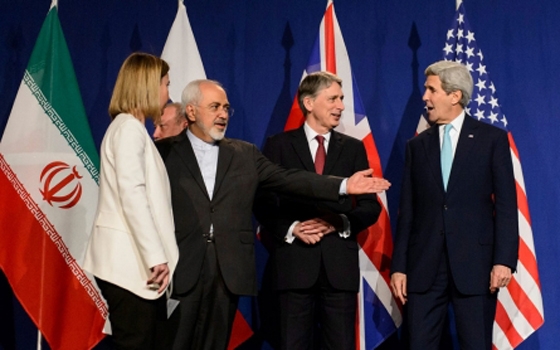The price of Brent crude oil price closed down 3.6 per cent to $55 a barrel on 2 April after Iran and world powers agreed a political framework to limit Iran’s nuclear program in exchange for relief from economic sanctions.
Although the deal had an immediate impact on oil prices , the drop was not as severe as many analysts forecasted and the Brent price remained higher than it was at the start of the week.
, the drop was not as severe as many analysts forecasted and the Brent price remained higher than it was at the start of the week.
Iran and the P5+1 world powers are aiming to flesh out a comprehensive nuclear accord by 30 June, after which the US and EU will begin to roll back sanctions against Iran’s oil and banking sectors.
The Iranian oil ministry has said it would be able to immediate ramp up exports towards pre-2012-sanctions levels quickly after restrictions are lifted.
In the longer term, the country should be able to increase its oil and gas capacity aided by overseas investment and technology brought in by international oil companies (IOCs).
and technology brought in by international oil companies (IOCs).
Downward pressure on oil
The return of Iran as Opec’s second largest oil exporter after Saudi Arabia will create further downward pressure on prices in a market which is already oversupplied. However, the relatively marginal drop in the Brent crude price indicates that traders are not yet expecting a glut of additional supply from the Islamic Republic.
If a comprehensive agreement is reached in June the rolling back of sanctions is likely to be a lengthy and complex process, with IOCs unlikely to rush to re-enter Iran while legal complications remain.
The outline agreement on the future shape of the Iranian nuclear programme was reached after marathon talks between Iran and six major powers in Switzerland on 2 April.
Iran, the US and Germany all said a solution had been found after eight days of negotiations in Lausanne.
Shortly after the agreement was announced, the US State Department on 2 April published a detailed list of what it calls the “Parameters for a Joint Comprehensive Plan of Action” regarding Iran’s nuclear programme.
Key points of framework agreement
The statement is aimed at winning over domestic opponents in the US and in the region and includes the following key points:
• Iran will be allowed to have 6,104 centrifuges installed out of its current 19,000 and only a little over 5,000 of them will actually be enriching uranium. All the working centrifuges are to be early, less advanced models. And everything else is to be stored under supervision of IAEA inspectors
• Iran will reduce its stockpile of low-enriched uranium – the vital feedstock that would be needed to enrich further to get bomb-making material
• There will be no enrichment at the underground Fordow site for 15 years
• Inspectors will have access not just to key nuclear facilities but to the supply chain supporting Iran’s nuclear program and to uranium mines and mills
• Iran will be required to grant access to IAEA inspectors to investigate suspicious sites or suspected clandestine activities anywhere in the country
• The heavy water reactor at Arak that many feared would provide Iran with a plutonium route to a potential bomb is to be re-built so as not to produce weapons grade plutonium.
Many of these constraints will be in place for 10 years and some will last for 15 years.
In return:
• Iran will see US and EU nuclear-related sanctions suspended, though no clear timetable has been given for exactly how this will proceed
• It will not actually have to close any nuclear facility altogether
• It emerges, once the restrictions expire, with the basis for a significant nuclear industry.
US President Barack Obama has said he was “confident” of reaching a final deal over Iran’s nuclear program by an end-of-June deadline.
On 3 April, Obama said he had begun efforts to win over skeptical members of Congress including opponents in the Republican party, which controls both US Houses of Congress, and where there is bipartisan support for a bill which would give Congress the right to review any deal before sanctions are lifted. Obama has threatened to veto it.
Iran’s President, Hassan Rouhani on 3 April promised that Tehran would abide by the terms of the preliminary agreement, so long as the six powers do so.
Iran denies Western claims it is trying to build a nuclear weapon, and it entered negotiations in order to see economic sanctions imposed on the country lifted.
The negotiations between the so-called P5+1 – the US, UK, France, China and Russia plus Germany – and Iran at Lausanne’s Beau-Rivage Palace hotel were supposed to end on 31 March but overran in the search for agreement.
In a tweet, Iranian Foreign Minister Mohammed Javad Zarif said: “Found solutions, ready to start drafting immediately.” Iranian President Hassan Rouhani thanked Zarif for his efforts during the talks.
Also on Twitter, Germany’s foreign ministry said: “Agreement for framework on final agreement reached.”
And US Secretary of State John Kerry tweeted: “Big day… Back to work soon on final deal.”
Meed
4 April

























































